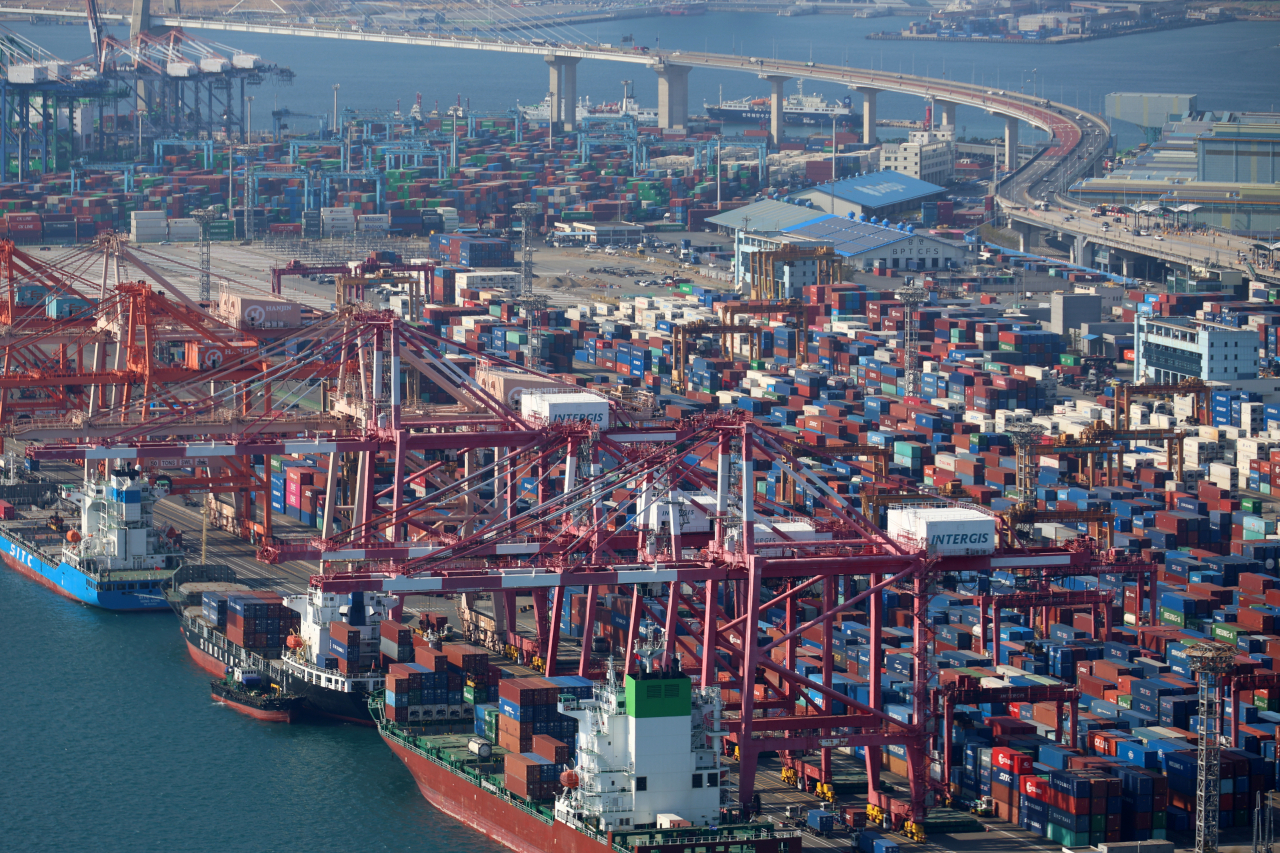
South Korea's import prices climbed for a fourth consecutive month following the devaluation of the Korean won, central bank data showed Wednesday. Export prices rose as well in the period.
The import price index for October stood at 140.38, rising 0.5 percent from the month before. The figure has been advancing for four straight months since July, according to preliminary data from the Bank of Korea.
Yet, compared to the same month last year when international oil prices surged, the figure dropped by 10.2 percent.
“The import prices rose from the increase in won-dollar currency rate,” BOK official Yu Seong-wuk said at a press briefing held Monday.
"Though international oil prices temporarily surged after the conflict in the Middle East, the prices were brought down to lower levels than the previous month's average. We have assessed (that the war) did not have much impact on the indices,” Yu said.
Despite the concerns about the volatility of international oil prices following the Israel-Hamas war, the monthly average of Dubai crude slid from $93.25 per barrel in September to $89.75 in October.
But the weakening of the Korean won against the US dollar has put pressure on the price index, the BOK explained. The monthly average of the won-dollar currency rate reached 1,350.69 won in October, up 1.6 percent from a month before at 1,329.47 won.
On a contract currency basis, excluding the currency exchange rate factor, import prices dropped by 0.9 percent on-month.
The export price index for October was 120.17, up 0.5 percent on-month. Similar to the import index, it has been on an increase for the past four consecutive months since July. On a yearly basis, the figure dropped by 9.5 percent.
"The export prices of semiconductors are on the rise for two consecutive months on a contract currency basis," Yu said. “With inventory adjustment following a production cut from major suppliers, the prices are on the rise."
As Yu mentioned, Korea’s chip exports are showing signs of recovery after a prolonged slump. The export prices of memory products like flash memory and DRAM rose by 13.5 percent and 9.9 percent each in October compared to a month before.
More recent figures suggest a recovery as well. Exports of semiconductors in the Nov. 1-10 period rose by 1.3 percent on-year, marking a turnaround in its 15-month losing streak from August 2022, figures from the Korea Customs Service showed Monday.
While the Korean won has strengthened against the US greenback in November compared to the month before, with the won-dollar currency opening at 1,320 won on Tuesday, the BOK said it is too early to tell whether the upward trend in export-import prices will end soon.
“It is still November and there are other factors than the currency, such as the impact from oil prices and the chip industry,” Yu said. “All these factors should be considered in determining the export-import prices for November.”



















![[Today’s K-pop] Treasure to publish magazine for debut anniversary](http://res.heraldm.com/phpwas/restmb_idxmake.php?idx=642&simg=/content/image/2024/07/26/20240726050551_0.jpg&u=)